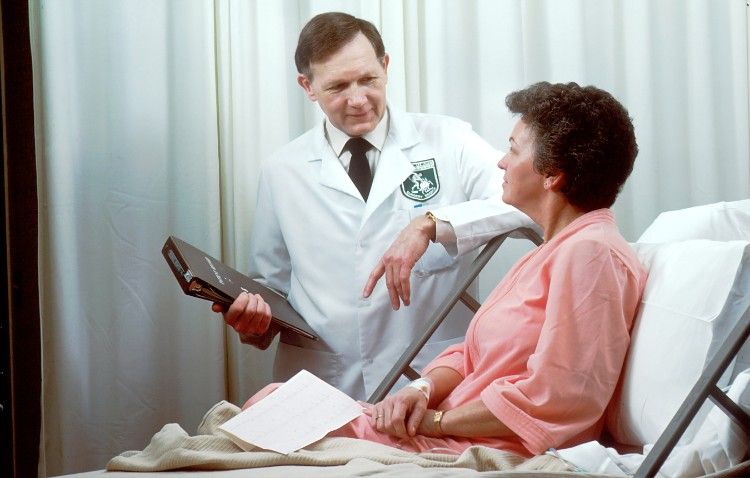The Triple Aim is Impossible Without Disruptive Innovation
I’ve been working on this blog for almost two months. If you think that means I’m a comparatively slow writer, you wouldn’t be far off the mark. But I’m not that slow. The other possibility is that we’re dealing with a highly complex topic requiring more than the usual amount of reflection or research.
As it turns out, that’s not the case, either.
In fact, the Triple Aim is wonderfully clear and concise. The problem has been that attaining the Triple Aim is related to the larger world of healthcare reform. As we know, that particular environment has been a rapidly moving target – with controversy at its center – for quite a while, especially in recent months.
So that’s my excuse for the slow start. I’ve been trying to wait out the introduction of a coherent policy proposal that would provide direction for making the health system work better. And as we also know, that hasn’t happened. The good news is that as we try to orient to an uncertain healthcare geography, the Triple Aim remains a true north.
The Triple Aim is a simple idea with a powerful potential
When it was first developed by the Institute for Healthcare Improvement (IHI) in 2008, the Triple Aim of improving the patient’s experience of care, improving population health and reducing per capita costs served as an elegant manifesto encompassing the diverse efforts of many thousands of healthcare professionals. For me, this call to action and its implicit goals of more integrated and accessible care, particularly in the area of primary care, resonated strongly with my personal vision of medicine. Almost a decade later it continues to do so.
But don’t confuse it with a blueprint
Now that we’ve reminded ourselves of the right endpoint, any discussion of the Triple Aim is incomplete without a look at what the initiative isn’t. And it isn’t a blueprint. To extend the analogy, if successful healthcare reform were a completed, occupied and fully functioning building, then the Triple Aim is the architect’s rendering. The IHI initiative doesn’t come with any instructions, and while its creators most likely envisioned an across-the-board national application, the Triple Aim probably makes more sense when it’s overlaid on the subpopulation of a particular health system.
And then there’s the inconvenient fact that we haven’t come up with a comprehensive and broadly accepted measurement system for achieving the initiative’s goals. If we don’t have a blueprint and a measurement system, how do we continue at a time when health policy is in such turmoil?
So how do we get there?
Since effective change doesn’t appear to be coming from the top down, we’re left with working from the bottom up, and that foundation is surely primary care. Unfortunately, primary care hasn’t been the focus of healthcare since World War II and now, as a nation, we’re paying for it dearly. It is safe to say, whatever health-related laws ultimately come out of the legislative process, a truly successful health system will be possible only if it provides affordable, accessible, quality-based and productive primary care.
This is the best route to the Triple Aim, but I don’t think we’re quite ready to travel on it yet. And it’s not because we don’t have what it takes to get there. The current deficiencies in primary care are less about insufficient resources than the far more manageable problem of care delivery processes that many physicians and administrators are still reluctant to drop. Just as the house call proved inefficient and cumbersome for an expanding general population by the middle of the 20th century, the current approach to primary care visits can’t keep up with the special needs of a rapidly aging population in the world of managed care. The traditional primary care visit of today – which is getting close to 100 years old – must go the way of the house call.
Disruptive innovation starts with a transformed exam room
If there’s a bottle neck in the day-to-day world of primary care, it’s in the exam room. That’s where the needed innovation has to occur on the journey to the Triple Aim, and the most important vehicle is an effective team. It’s a team inside the exam room in which staff accomplish all of the non-physician work – which represents 60% or more of the total. This degree of appropriate delegation can transform an office in months, in terms of productivity, staff and patient satisfaction and an improved work-life balance for the provider. And it’s a transformation that costs surprisingly little while holding the potential to save billions of dollars through more efficient care, greater capacity and improved health.
Why the Triple Aim matters
As we move through the current uncertainty, the Triple Aim helps us keep our eyes on the prize of better ways to deliver and pay for care. Not that we’re likely to forget those major concerns, but it’s helpful to hold out a concise yet clearly defined set of goals. Along with serving as a constant reminder and a collective aspiration, the Triple Aim is also a tool to help us examine current and future health policy legislation.
Simply put, we can predict the potential success or failure of health policy by viewing it through the Triple Aim lens. This deceptively simple criterion may prove to be the Triple Aim’s greatest value.
In coming blog posts we’ll discuss the specific skills and operational adjustments needed to create the kind of effective team mentioned above – as well as some of the behavioral and attitude changes needed to assure a successful exam room transformation. As we used to say in the pre-digital age, stay tuned.

